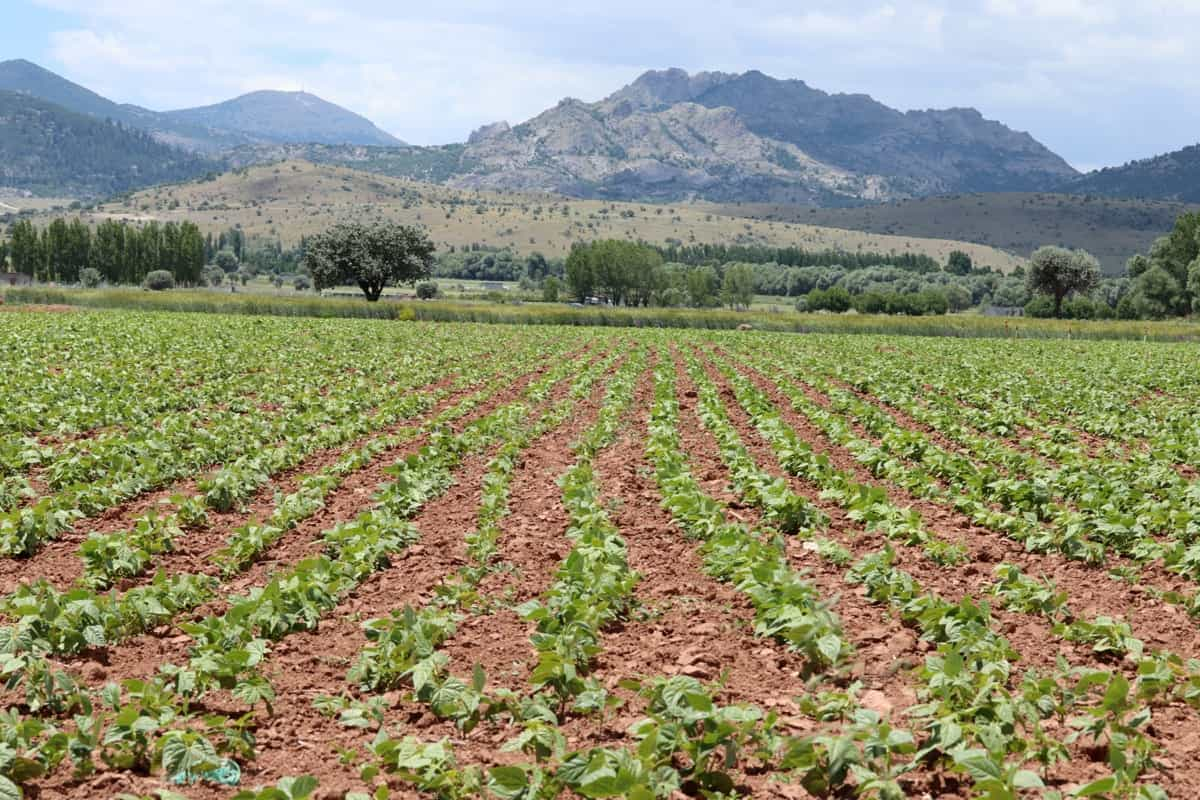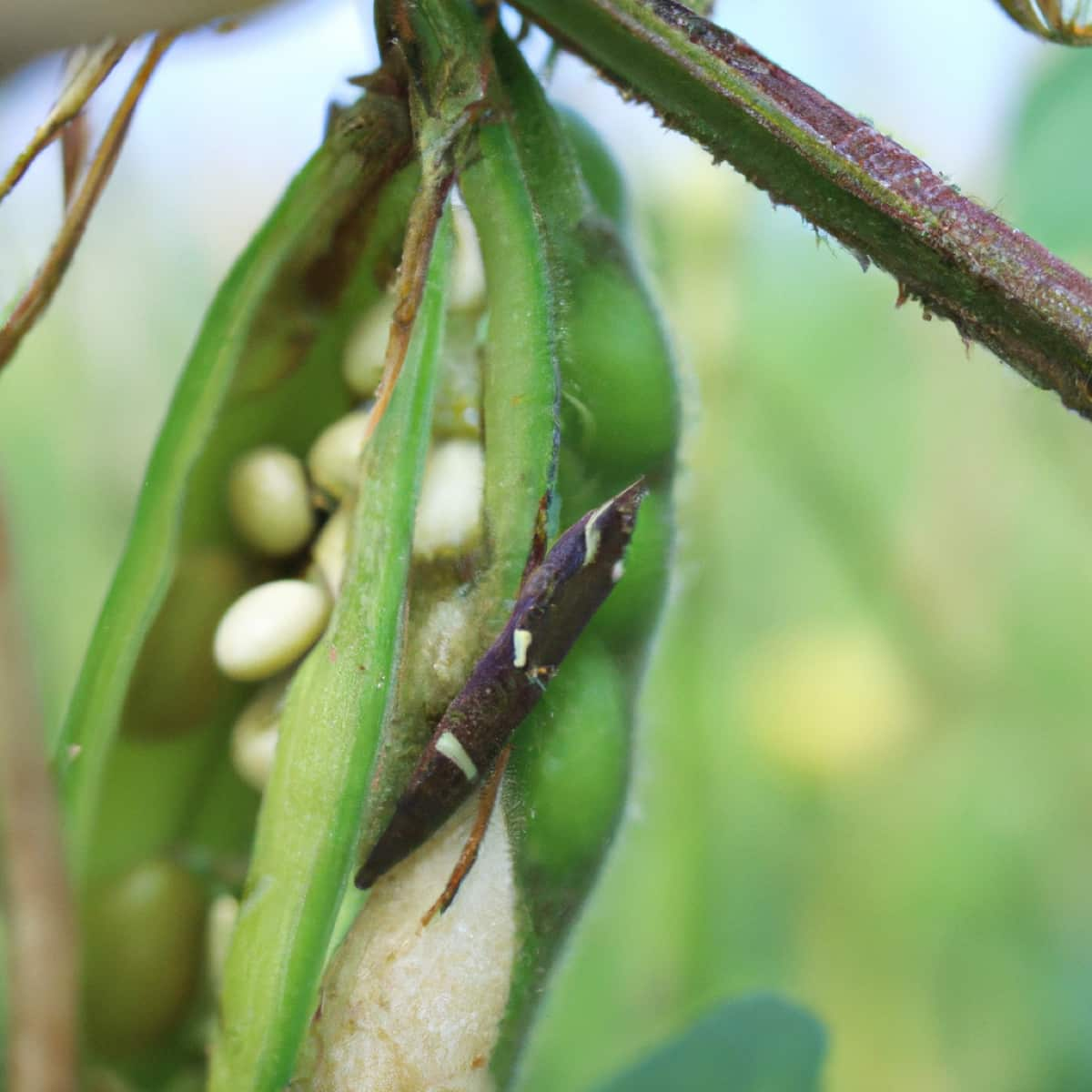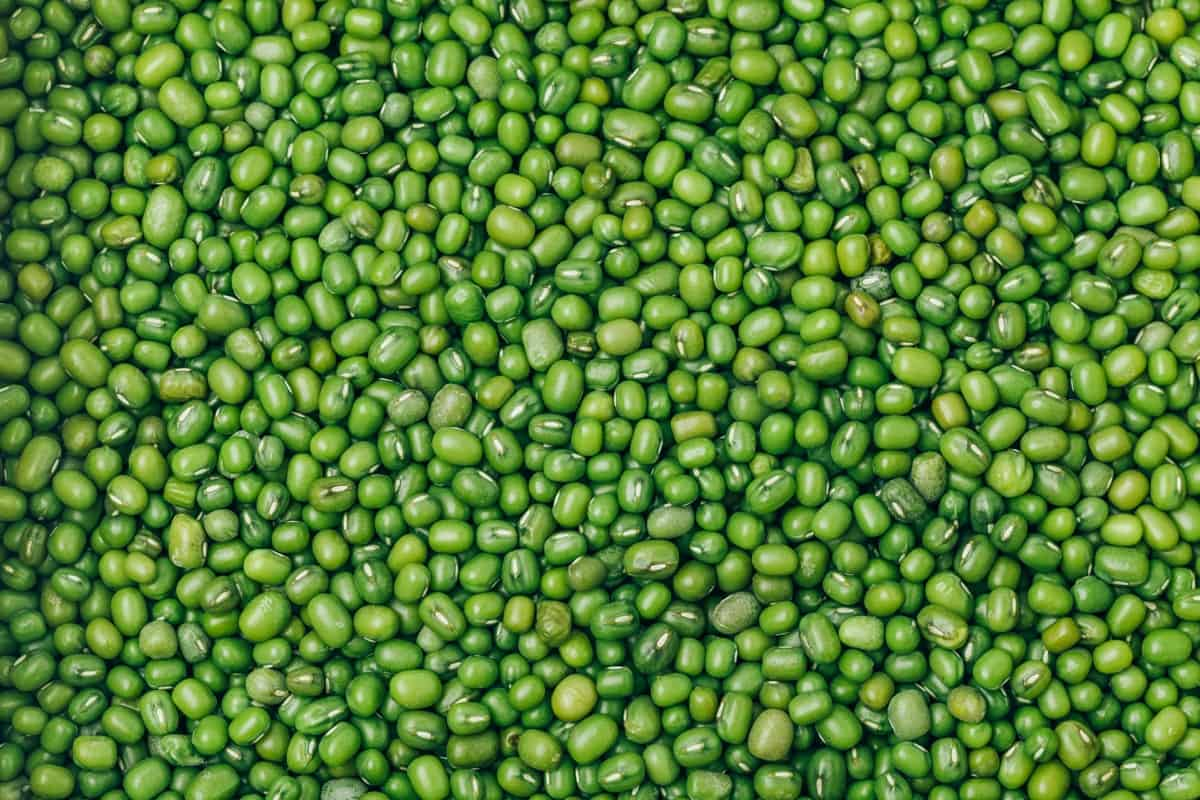Gram Pod Borer (Helicoverpa armigera) is a major insect pest that infests green gram (Vigna radiata), an important pulse crop in many nations, including India. Significant production losses are caused by the larvae of this bug, which bore into the green gram pods and feed on the developing seeds. The Gram Pod Borer is a pest with a broad range of host plants: cotton, tomatoes, chickpeas, and pigeon peas.

With a 40–50 millimeter wingspan, the adult moths appear brown. The caterpillars hatch and bore into the pods within a few days of the female moth laying eggs on the host plant’s leaves and pods. The harm that the pest causes is most severe during the last stage of the larvae’s development, which involves several stages.
Multiple methods can be used to control the Gram Pod Borer outbreak in green gram. Crop rotation, intercropping, and sowing early-maturing varieties are cultural practices that can help control the pest population. Additionally, biological control agents like Bacillus thuringiensis (Bt) and pheromone traps can successfully control the pest. If the pest population is too large, chemical insecticides can be used as a last resort, but their use should be carefully controlled to avoid the emergence of resistance.
According to research, a mix of these management techniques can successfully control the Gram Pod Borer in green gram, minimizing yield losses and fostering sustainable production. To reduce chemical insecticides and encourage sustainable agriculture, it is crucial to regularly track the pest population and use integrated pest management (IPM) techniques.
Gram Pod Borer Management in Green Gram
Identification of Gram Pod Borer
Gram Pod Borer (Helicoverpa armigera) can be identified by its various life stages. The eggs are spherical and creamy white, laid singly on the leaves or pods of the host plant. The larva can vary in color from greenish to brown and has dark brown and grey lines laterally on the body with lateral white lines and dark and pale bands. The brown pupa occurs in soil, leaf, pod, and crop debris. The adult moth is a light pale brownish-yellow stout moth with grey forewings to pale brown with a V-shaped speck. The hind wings are pale smoky white with a broad blackish outer margin.
The Life cycle of Gram Pod Borer
The life cycle of Gram Pod Borer (Helicoverpa armigera) consists of different phases. The female moth lays the eggs on the leaves or pods of the host plant, and within a few days, the eggs develop into caterpillars. The damage is most serious during the last stage of the larvae’s development because they feed on the developing seeds inside the pod.
During the 20 to 25 days of larval, the larvae go through several developmental phases, shed their skin, and get bigger. Following larval development, the insect pupates for 10 to 15 days in the soil or crop debris. The adult moth emerges after the pupal period, remaining for about 5-7 days.
Causes/Conditions Favorable for Gram Pod Borer Spread in the field
The pest population and the duration of each life stage are closely linked to environmental conditions, especially temperature, and food availability. High temperatures and a lack of moisture can increase the pest population, and low rainfall can reduce the availability of natural enemies. Poor sanitation, improper crop rotation, and monoculture practices can also contribute to the spread of Gram Pod Borer.
In case you missed it: Yellow Mosaic Disease Management in Green Gram: Symptoms, Identification, Treatment, Chemical, Biological, Natural, and Organic Control

Damage Symptoms of Gram Pod Borer
Gram Pod Borer (Helicoverpa armigera) larvae feed on all parts of the green gram plant but prefer flowers and pods.
- Defoliation in the early stages
- Larvae were observed hanging out of pods while feeding.
- The head of the larvae alone thrust inside the pods while the rest of the body hangs out.
- Presence of feeding holes on the pods
- Pods with round holes
Yield Loss due to Gram Pod Borer on Green Gram
Green Gram is highly susceptible to damage caused by Gram Pod Borer (Helicoverpa armigera). Yield losses due to this pest can reach up to 90-95% during favorable weather conditions.
Gram Pod Borer Management in Green Gram by Cultural Method
To manage Gram Pod Borer in Green gram by cultural method, farmers can use light traps (1/5 acre) and observe during the evening hours. They can also set up para-pheromone traps (5/1 acre) to capture the pest. Additionally, farmers should aim to grow large and healthy plants with a good fertilization scheme while avoiding over-irrigation, as this can promote pest growth.
Gram Pod Borer Management in Green Gram by Biological Method
One of the methods is to maintain a population of beneficial insects that parasitize or attack the pest.
- Trichogramma wasps, Microplitis, Heteropelma, Netelia sp., predatory bugs such as the big-eyed bug, glossy shield bug, and spined predatory shield bug can limit the pest’s development.
- Ants and spiders can also attack the larvae. Bio-insecticides based on NPV (Nucleopolyhedrovirus), Metarhizium anisopliae, Beauveria bassiana, and Bacillus Thuringiensis can also be used.
Gram Pod Borer Management in Green Gram by Chemical Method
- Farmers should monitor population levels to determine whether a chemical approach is necessary.
- The economic threshold level for the pest is set at eight moths per night with four traps per acre over three consecutive nights.
- Two effective chemicals for controlling the pest are Endosulfan 35 Ec and Monocrotophos.
- Coragen should be sprayed at a rate of 1.25 liters per hectare in 1000 liters of water, while Monocrotophos should be applied at a rate of 1 ml in 1 liter of water using 800 liters of water per hectare.
Gram Pod Borer Management in Green Gsram by Organic/Natural Method
- Botanical products like neem, chili, or garlic extract can be sprayed on the foliage to control the pest.
- Other organic management practices include crop rotation, intercropping with non-host species, and avoiding over-irrigation.
- These eco-friendly and sustainable methods promote natural pest control without harming the environment.
Preventive Measures for Control of Gram Pod Borer
- Choose tolerant/ resistant varieties
- Maintain proper spacing between plants
- Plant border crops like pigeon pea, cowpea, or gram to increase the population of beneficial insects
- Use trap crops like castor or chrysanthemum marigolds to attract the pest
- Use light traps and para-pheromone traps to trap the pest
- Avoid over-irrigation of the fields
- Plow at least 10 cm deep after harvest to expose larvae to predators
In case you missed it: Cercospora Leaf Spot Management in Green Gram: Symptoms, Identification, Treatment, Chemical, Biological, Natural, and Organic Control

Conclusion
Managing Gram Pod Borer in Green Gram involves identifying the symptoms of the pest, using cultural, biological, natural, and organic methods, and, if necessary, chemical control. Farmers should monitor population levels and choose effective chemicals for control while implementing non-chemical approaches.
- Types of Fungicides Used in Agriculture
- Common Issues in the Fruit Development Stage of Pomegranate Farming
- Fruit Development Issues in Papaya: Easy Solutions and Treatment
- Soil-Borne Diseases and How to Protect Your Plants
- Practices to Prevent Disease Spread in the Garden
- From Wilted to Thriving: How to Treat Root Rot Naturally in Houseplants
- Natural Remedies to Cure Brown Spots on Fig Tree Leaves
- Natural Solutions for Poinsettia Problems: 100% Effective Remedies
- How to Control Calla Lily Problems: Natural Remedies for Leaf and Flower Problems